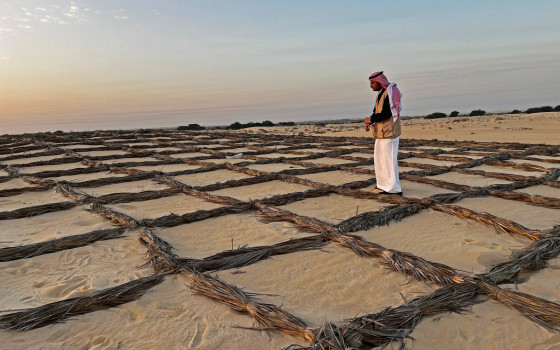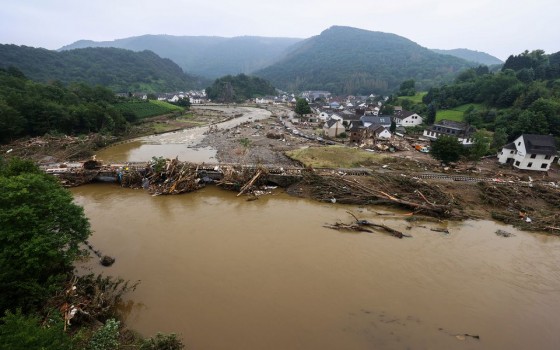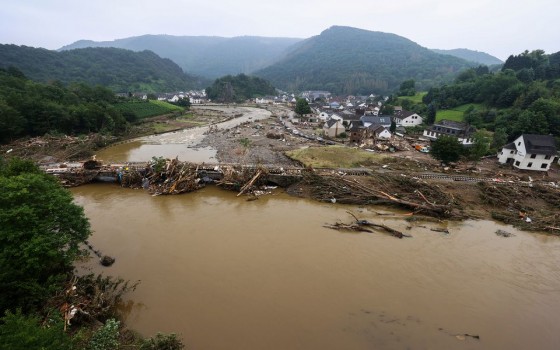
The spirit of resilience confronts the winds of desertification in Saudi Arabia

- Europe and Arabs
- Sunday , 29 December 2024 7:46 AM GMT
RIYADH: Europe and the Arabs
“Palm frond barriers,” a low-tech, sustainable solution that could help stop the advance of desert sands in eastern Saudi Arabia, thus supporting agricultural communities on the path to prosperity and preserving fragile habitats.
Saudi Arabia’s deserts are among the largest in the world, and controlling the movement of sand has long been a challenge not only for farmers who want to increase agricultural productivity, but also for communities who want to ensure a more prosperous future or attract investment for growth.
The Al-Ahsa Oasis in the Eastern Province of the Kingdom, one of the largest and most important oases in the country, is threatened by the advance of sand. According to the United Nations daily news bulletin
Villages buried under the sand
The sand dunes, which can reach heights of 15 meters, have submerged at least nine villages in the surrounding area. Some have been removed from the sand for rehabilitation, while others remain buried under the sand.
The phenomenon is not new, said Mona Doualbet of the Food and Agriculture Organization of the United Nations (FAO), which is working with the Saudi government and local communities on desertification control trials. “Communities, especially farmers, need additional support because they don’t have the resources to do it on their own,” she said.
Climate change has made the issue more important, with rising temperatures and low soil moisture drying out the sands and increasing the likelihood of desertification.
For decades, the state-owned oil company Aramco, which extracts oil and gas in the eastern desert, has protected infrastructure including roads by mechanically removing sand and other measures, but the cost is high. That’s why the FAO is promoting more sustainable methods.
Palm frond barriers
The organization is trialling low-profile barriers made from palm fronds, which are inexpensive and use materials that would otherwise be discarded as waste.
“Various forms can be designed to protect farms and facilities based on geographical and geomorphological conditions,” Doualbet said of the technique.
These designs include grid or linear patterns of varying heights, from 10 centimetres to one metre, depending on the specific purpose of the barrier.
The grid technology, which resembles a chessboard, has shown to be effective in reducing sand encroachment and promoting the growth of natural vegetation, including creating favourable conditions for planting trees or spreading seeds.
“Palm barriers will not completely prevent the wind from carrying sand towards the lands we want to protect, but they reduce its speed and radically change the direction of the sand flow,” the UN official stressed.
There are additional environmental benefits to using palm fronds, which are usually burned as waste, releasing harmful carbon dioxide that fuels climate change.
Preventive measures
FAO is piloting weather stations based on global standards to provide data on the complex science of sand movement.
By analyzing patterns of “suspension” (particles suspended in the air by wind), “salting” (small particles that bounce on the surface), and “surface creep” (particles that roll on the ground), the size and direction of sand creep can be predicted in conjunction with other climate factors such as wind speed and direction, humidity, and temperature.
Preventive measures can be taken to target specific locations where sand tends to move toward valuable agricultural land and erode topsoil.
Turning challenges into opportunities
FAO has partnered with the Green Environment Society in Al-Ahsa to implement sand barriers aimed at protecting Al-Ahsa National Park, a government-run entity.
The initiative sought to strengthen the relationship between government institutions and local communities, while building the capacity of NGOs to construct sand barriers using palm fronds.
Dualbet said that this approach not only ensures local sustainability, but also promotes community engagement in environmental conservation efforts.
She added: “In Saudi Arabia, and especially in Al-Ahsa, there are concerns about land degradation and the loss of productive land, but together we can turn these challenges into opportunities.”
“I have been working with desert communities for 20 years. They are people with a strong spirit and great resilience, and I believe that the winds of change in the fight against land loss will continue after this initiative from FAO,” said the UN official.












No Comments Found